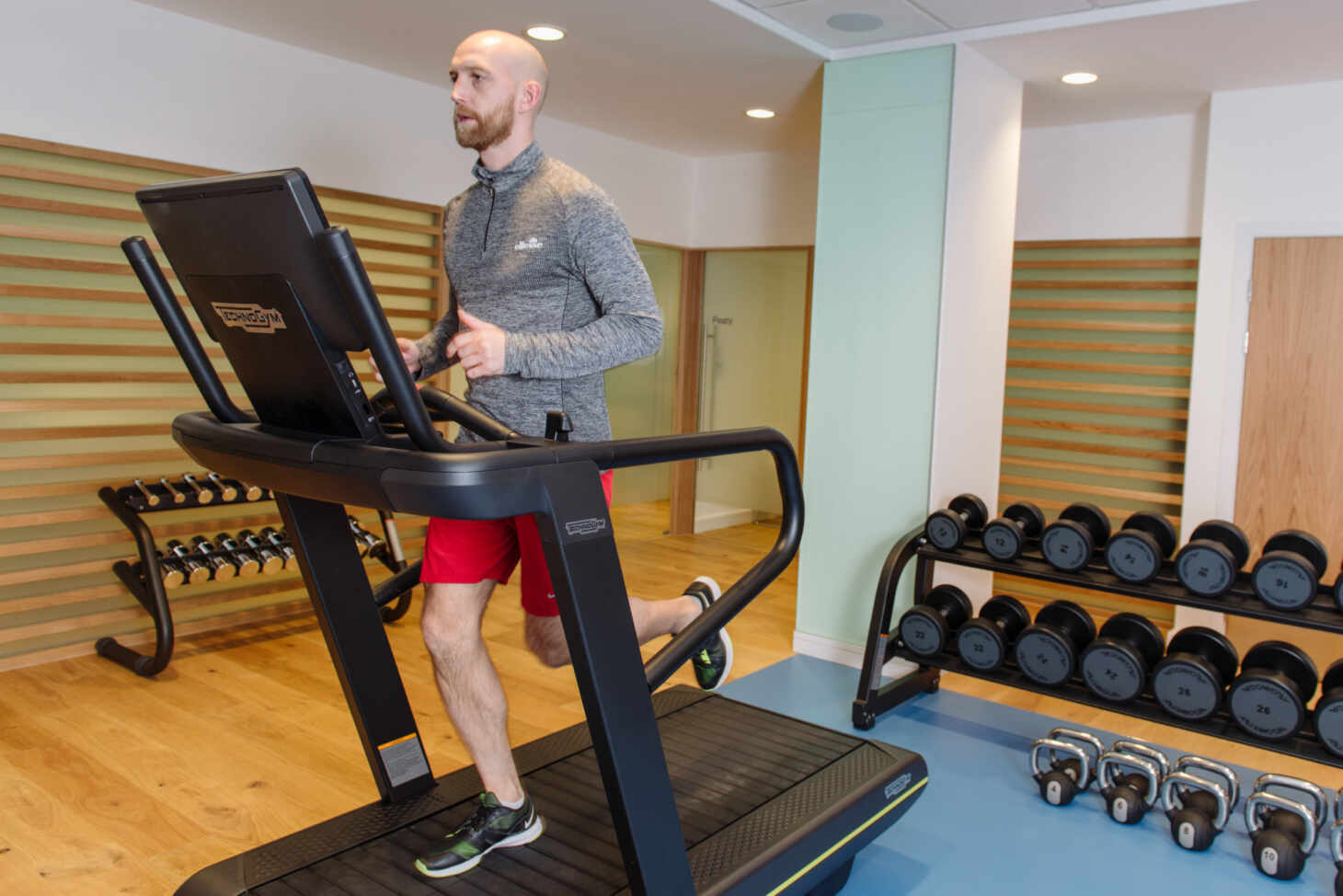The Pure Pod Episode 3: Training for Marathons & HYROX

Dawn Nunes
Physiotherapist
- 2 December, 2024
- Hyrox
- Exercise
- Running
- 5 min read
Training over the winter months can prove difficult. A 2022 survey by Noom found that a fifth of UK adults exercise less as temperatures drop. Where motivation lacks, sometimes, fitness challenges or goals can help to increase activity. However, jumping into physically exerting training regimes can produce its own problems.

Take the marathon for example. Long distance running is one of the most popular forms of exercise in the UK. A poll by Our Sporting Life found that 1-in-5 adults run at least once a month. Participation in organised races are rapidly increasing; over 800,000 people applied to run in the 2025 London Marathon.
For those lucky athletes that are chosen in the ballot the reality of the arduous but rewarding training regime quickly quicks in. With around four months of escalating effort ahead, managing injury, prioritising recovery and ensuring peak performance for race day requires a level of planning most amateur runners simply aren’t accustomed to.
Hyrox has proven a cultural phenomenon over the past couple of years. The gruelling fitness race which mixes weight training, callisthenics, high intensity cardio and middle distance running has captured the imagination of fitness aficionados; 200,000-plus racers took part in a race in 2024.
In this podcast, we’ll give you tips for maintaining motivation for training over the winter months, specific training strategies for both marathon training and Hyrox preparation.
Today, we’re joined by Dawn Nunes, a physiotherapist, Pure’s Head of Rehab, and an accomplished ultra marathon runner, as well as Ian Griffiths, a podiatrist with experience in working with Premier League Football teams, England Rugby 7s and Team GB hockey.
Listen to the podcast in full below, or read on for some snippets from the conversation. You can also subscribe to The Pure Pod on Apple, Spotify, or wherever you can get your podcasts.
Timestamps:
- Maintaining motivation over the colder winter months (2:00)
- The dangers of pursuing difficult exercise challenges without proper management or preparation (5:00)
- How to ramp up training before a long distance race (7:00)
- The different recovery strategies available to long distance runners (13:00)
- How runners can introduce different types of training to stave off boredom or apathy (16:30)
- How long distance runners can develop resilience in their training (20:15)
- How a podiatrist and physiotherapist might work together to help overcome common injuries (26:00)
- The other common issues associated with long distance running (28:15)
- If there are common injuries associated with cross training, the training style that underpins Hyrox (32:15)
- How to build up training for a Hyrox event (36:45)
- Advice for runners or athletes struggling for motivation while trying to achieve their new fitness goals (40:45)
How do you maintain motivation for exercise during winter months?

Dawn Nunes: Winter is definitely a harsh time, especially in the UK. It gets colder, it gets darker, so the motivation to go outside is harder to come by, especially if you’re training outside. That has happened to me.
I got a diary and wrote down dates and times when I went out. Even if it was just for a two or three mile run. The point was to do it on a daily basis and record it. Make sure those pages weren’t blank basically.
The key thing is to have a goal, maybe get other people involved, and not be too hard on yourself. Sometimes just getting out the door is the best thing.
Ian Griffiths: I treat training like something I have to do. I know my personality, and I’m sure other runners are the same. I’ll think ‘I’ll just miss one session.’ Missing one session never matters. But do we ever really miss one? It’s the reason I don’t eat many biscuits. It never stops at one does it? I ask myself, where might this go? If it undermines my consistency, that’s problematic.
Goals can be helpful for motivation, and many runners spend their winter building towards long distance races in the spring. These runners will be pounding the streets, but what other activity should they prioritise to improve their performance, and mitigate injury?
Dawn: The biggest thing is not to neglect your core and upper body. We use our whole body when running.
Yes, leg exercises are important. I like Bulgarian split squats and Romanian deadlifts. But other strength building exercises are side planks. We need to build those stabilising muscles.
What can you do from a recovery point of view? It’s not just exercise you need to think about. Sleep is so important. Nutrition, hydration and reducing stress too.
Ian: With those lower leg exercises Dawn mentioned, you can make them running specific. If you’re going to squat, do it one leg. Running is one legged endeavour. Make your strength work as transferable to your actual activity as much as possible.
The other thing I’d mention is stretching. The research here is equivocal. I’m not saying you should do it, or that you definitely shouldn’t. There are a lot of runners who find it helps them, and it’s an important part of their preparation.
Knee pain is a common problem for long distance runners. What are some of the causes and how might you work together to help a runner that is experiencing pain in that joint?
Ian: Knee pain, kneecap pain in all its flavours is definitely the most common complaint I see. When we take history from these runners, we can maybe tease out a training error that is contributing. Frequency, volume, intensity and the organisation of the training. It’s very individual, but there are some blanket approaches that can help.
Get your load management right. We know that increasing your cadence, i.e. increasing the number of steps you take per minute without speeding up, can improve the angle of your joint and where you foot lands in relation to your centre of mass.
Dawn: Often, we get runners that are doing strength training but they don’t reduce that as they increase distances in their running.
Ian: Gold standard care for someone running a marathon who experiences knee pain should involve working with both a podiatrist and a physio. When someone comes to the studio to see a physio with this issue, and we’re discussing a management plan, we always refer to each other. And vice versa if they see me first. That’s not just for knee pain, but most lower limb running related injuries.
Hyrox is based around the principles of cross training. Can this exercise method produce certain injuries? Or enhance risk of getting injured?
Ian: Historically, we’ve considered cross training to be a benefit or a positive thing. We encourage runners to cross train more because having a broader range of training reduces the risks of repetition and overuse.
The problem is Hyrox is competitive. There’s a timed component So it’s encouraging people to train at very high intensity.
I worry that people might train for those eight runs (each of 1km in distance) at very high intensity. I’ll often encourage my patients to train like they’re doing a half marathon. Train for that border aerobic base of fitness. You’re going to break down if you go too hard too quickly.
Dawn: What I’m seeing is the importance of form. You’re in these big classes based around Hyrox movements, and the teachers can’t individualise. When you’re sprinting through on race day you aren’t going to be thinking about form. You need to do that in training, so it becomes normal and routine and that when you’re in a race mindset and fatigues you still have good form.
You can’t squat or perform rowing movements with poor form. You need the right range of movement, the right angles as these are big tendons, big muscles which, when pushed at that upper limit, could lead to very damaging injuries.

Advice
Over the last 20+ years our experts have helped more than 100,000 patients, but we don’t stop there. We also like to share our knowledge and insight to help people lead healthier lives, and here you will find our extensive library of advice on a variety of topics to help you do the same.
OUR ADVICE HUBS See all Advice Hubs